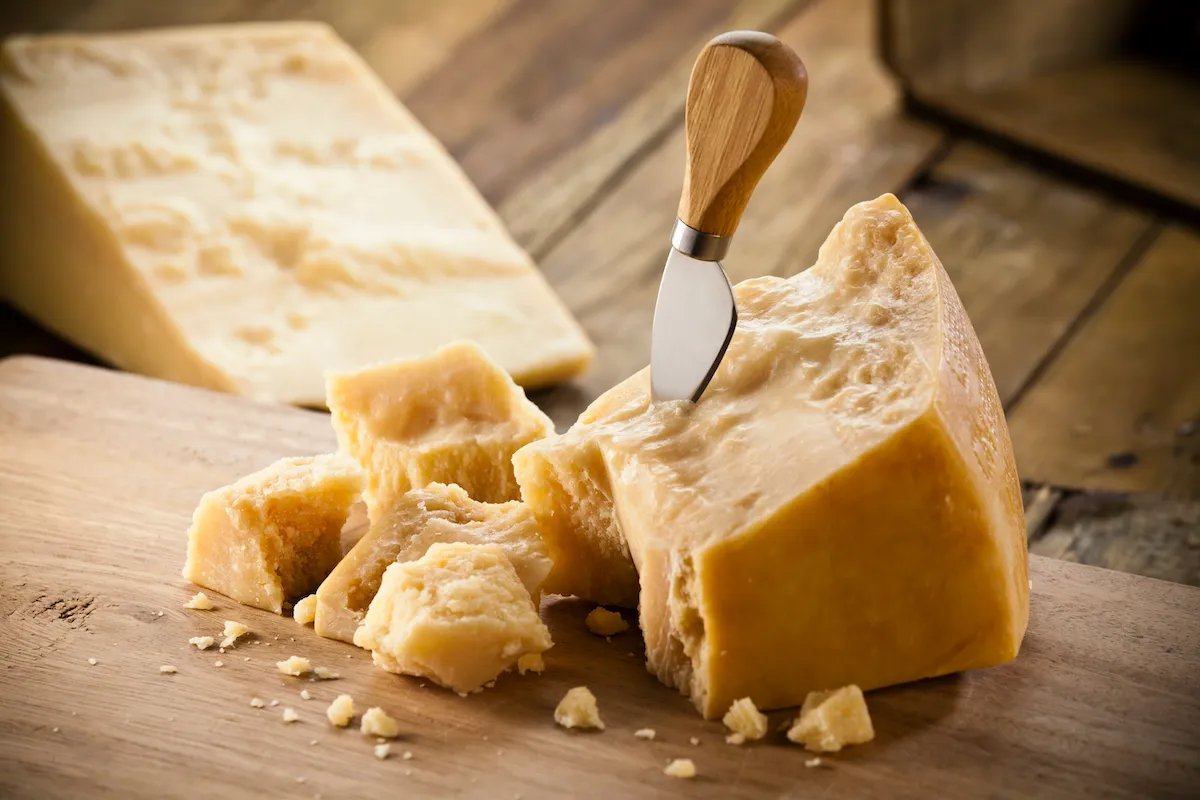Parmigiano reggiano has more knockoffs than Shein’s “new arrivals” tab.
Similarly to true Champagne, parmigiano reggiano can only be sold as “parmesan” (in Europe) if it is produced in the provinces of Parma or Reggio Emilia, Italy. Restrictions are looser in the United States, but only products labeled “parmigiano reggiano” are the authentic stuff. Fakes are getting harder to spot, though, and Italians are not having it.
There’s even a special organization dedicated to preserving the integrity of the cheese: the Parmigiano Reggiano Consortium, hilariously abbreviated as the PRC. The PRC has taken notice of the rampant, cheap recreations of its namesake product and has taken extreme measures to prevent imitations from getting falsified verification on the European market: microchipping the cheese.
The microchips are tiny, and are not in the actual consumable part of the cheese. (So you probably don’t have to worry about eating one and being tracked by the Italian government.) Rather, the chips are placed in the labels of each wheel and work as scannable tags. The purpose of the microchips (currently in the trial process) is to keep each wheel of precious parm reg traceable to its origin (the aforementioned provinces of Northern Italy).
We’re used to seeing this kind of digital rights management (DRM) in the tech sphere. But while microchips may seem like a drastic step to ensure the authenticity of something as commonplace as cheese, the counterfeit parm industry is worth about $2 billion annually. That amount is nearly equal to the value of the actual parmigiano reggiano market, so obviously someone had to step in.
The PRC was created in 1934, which kind of feels late in the game for a country that takes its cheese as seriously as Italy does. Nevertheless, the organization has made impressive strides in protecting the sanctity of parmigiano reggiano. For example, the American brand Kraft attempted to register one of its products as “Kraft parmesan cheese” in Ecuador last year but was thwarted by the Consortium. (Nowhere is safe from the watchful eye of the PRC.)
The art of making parmigiano reggiano in Italy has been perfected over about 900 years, and only calls for three ingredients: milk from Italian cows (who must be fed a strict diet), salt, and rennet. In addition, before the cheese can be sold, it must be checked and tested by experts to make sure it makes the quality grade. Given the strict and carefully curated production process, it’s no wonder the PRC has implemented modern technology to defend the honor of its beloved pasta topping.
(featured image: fcafotodigital/Getty Images)










Published: Sep 19, 2023 02:18 pm